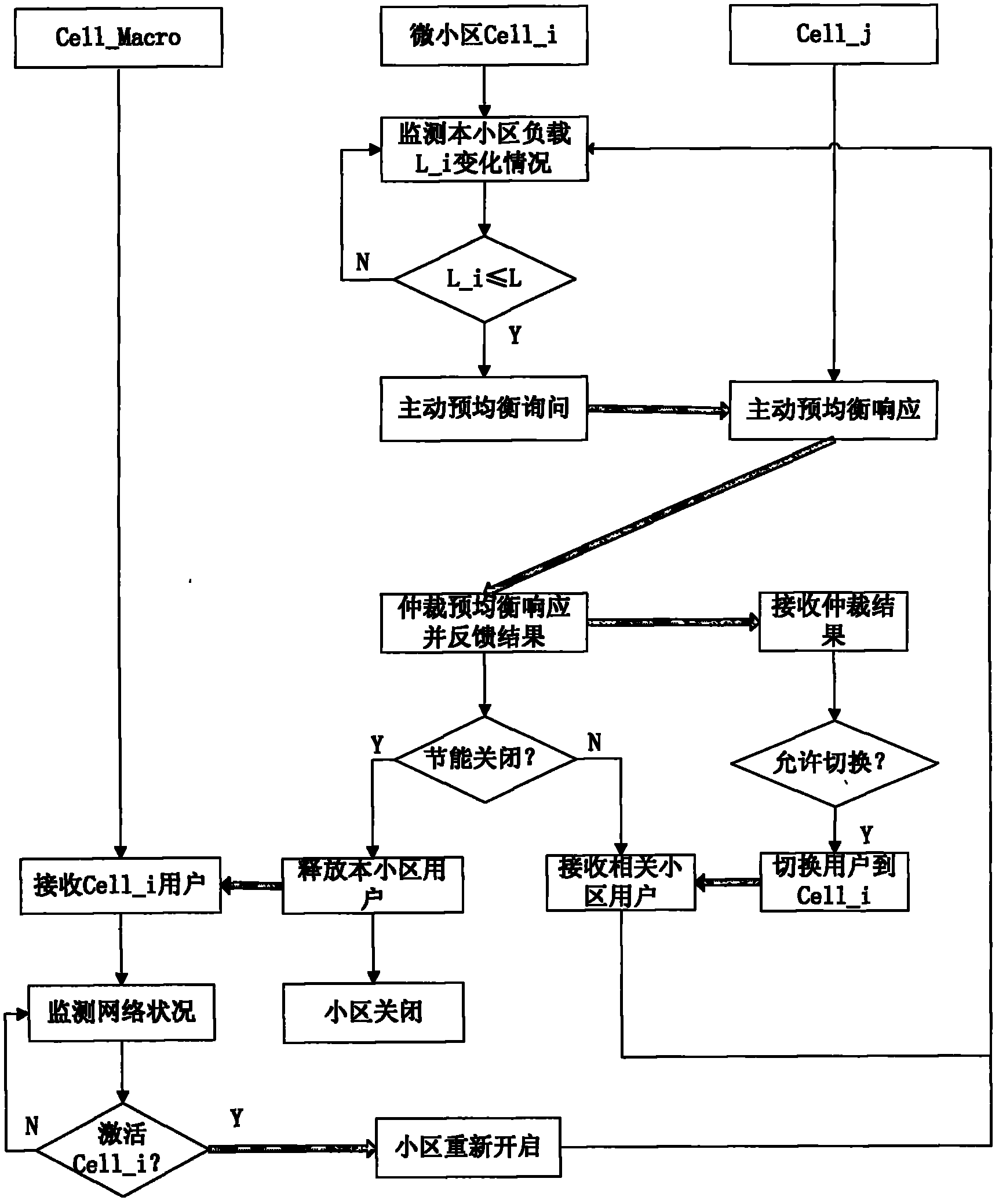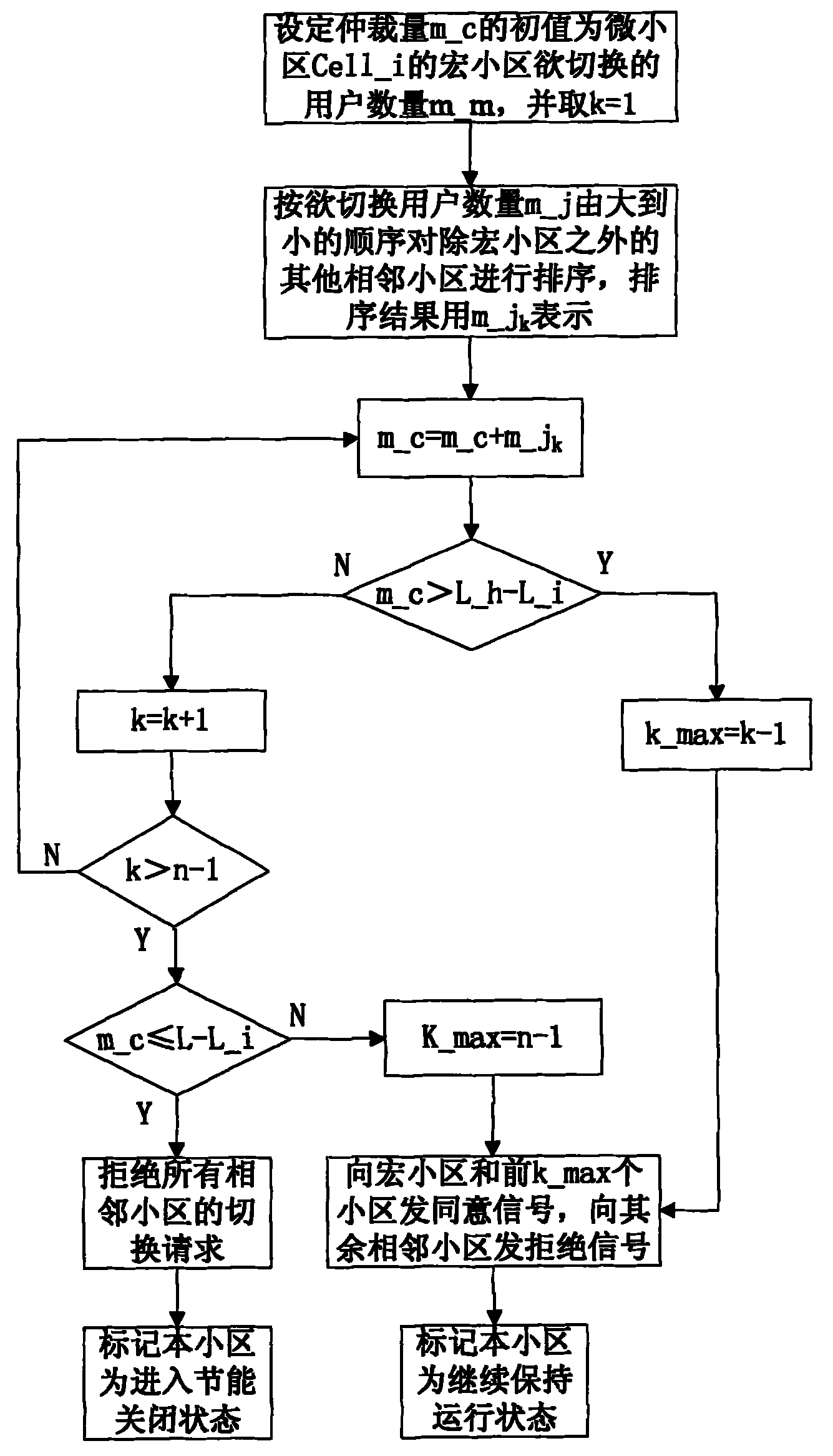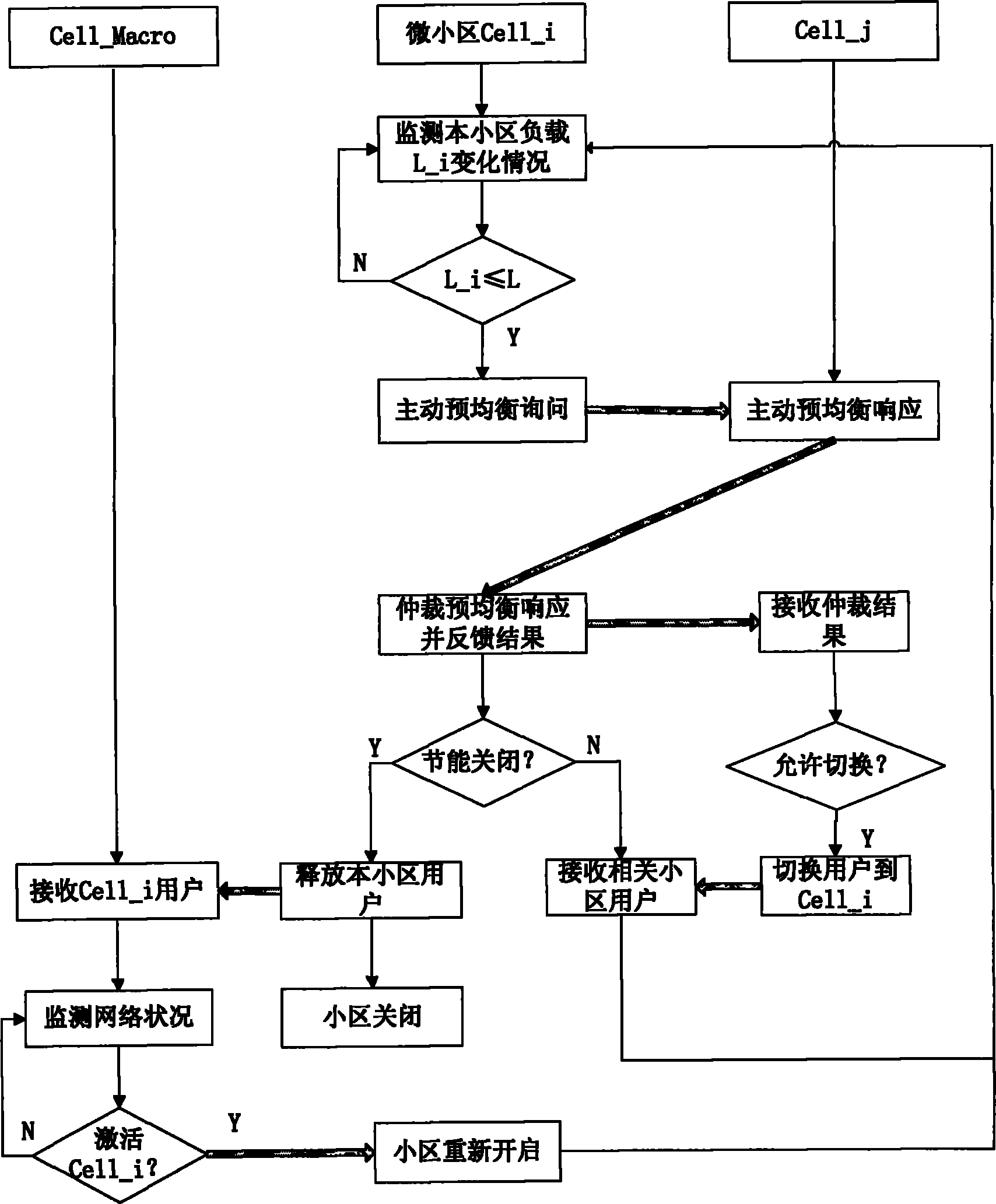Balance priority microcell energy-saving method in relay system
A relay system and micro-cell technology, applied in the direction of energy-saving ICT, reducing energy consumption, advanced technology, etc., can solve the problems of not considering the impact of macro-cells, not being able to prevent cell overloading in advance, and not making full use of cell-underloaded system resources, etc. , to achieve the effect of improving the utilization rate of communication resources, avoiding congestion, and reducing the possibility
- Summary
- Abstract
- Description
- Claims
- Application Information
AI Technical Summary
Problems solved by technology
Method used
Image
Examples
Embodiment Construction
[0024] The present invention will be further described below with reference to the accompanying drawings.
[0025] refer to figure 1 , the concrete steps of the present invention are as follows:
[0026] Step 1: The micro cell Cell_i monitors the change of the load L_i of the micro cell in the normal operation state, and compares L_i with the standard value L of energy saving shutdown of the micro cell; if the load L_i>L, continue to monitor the change of L_i ; If the load L_i≤L, trigger active pre-balancing and go to step 2.
[0027] Step 2: When the load L_i of the micro-cell Cell_i is smaller than the standard value L of energy-saving shutdown of the cell, active pre-balancing is performed according to the Ts36.423 protocol.
[0028] 2.1) The micro cell Cell_i sends an active pre-balanced switching query to the adjacent cell Cell_j, 1≤j≤n, n is the number of adjacent cells;
[0029] 2.2) After the adjacent cell Cell_j receives the inquiry, press L_j s ×A% standard to pe...
PUM
 Login to View More
Login to View More Abstract
Description
Claims
Application Information
 Login to View More
Login to View More - R&D
- Intellectual Property
- Life Sciences
- Materials
- Tech Scout
- Unparalleled Data Quality
- Higher Quality Content
- 60% Fewer Hallucinations
Browse by: Latest US Patents, China's latest patents, Technical Efficacy Thesaurus, Application Domain, Technology Topic, Popular Technical Reports.
© 2025 PatSnap. All rights reserved.Legal|Privacy policy|Modern Slavery Act Transparency Statement|Sitemap|About US| Contact US: help@patsnap.com



